Dining Table Sizing
When it comes to choosing the perfect dining table, size is a crucial factor to consider. A well-sized dining table not only enhances the aesthetic appeal of your dining area but also ensures comfort and functionality for everyday meals and special gatherings. Whether you’re looking for a round dining table for a cozy nook or an expansive rectangular table for larger spaces, or a custom dining table understanding the sizing guidelines is essential. This comprehensive guide will help you select the ideal dining table that complements your space and accommodates your guests comfortably, making every dining experience a delightful one.
Welcome to Taitlin Studio
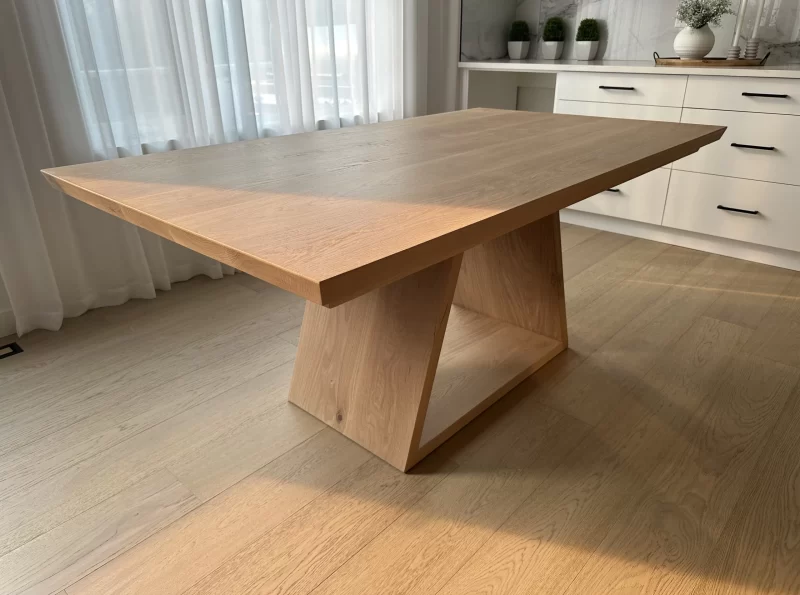
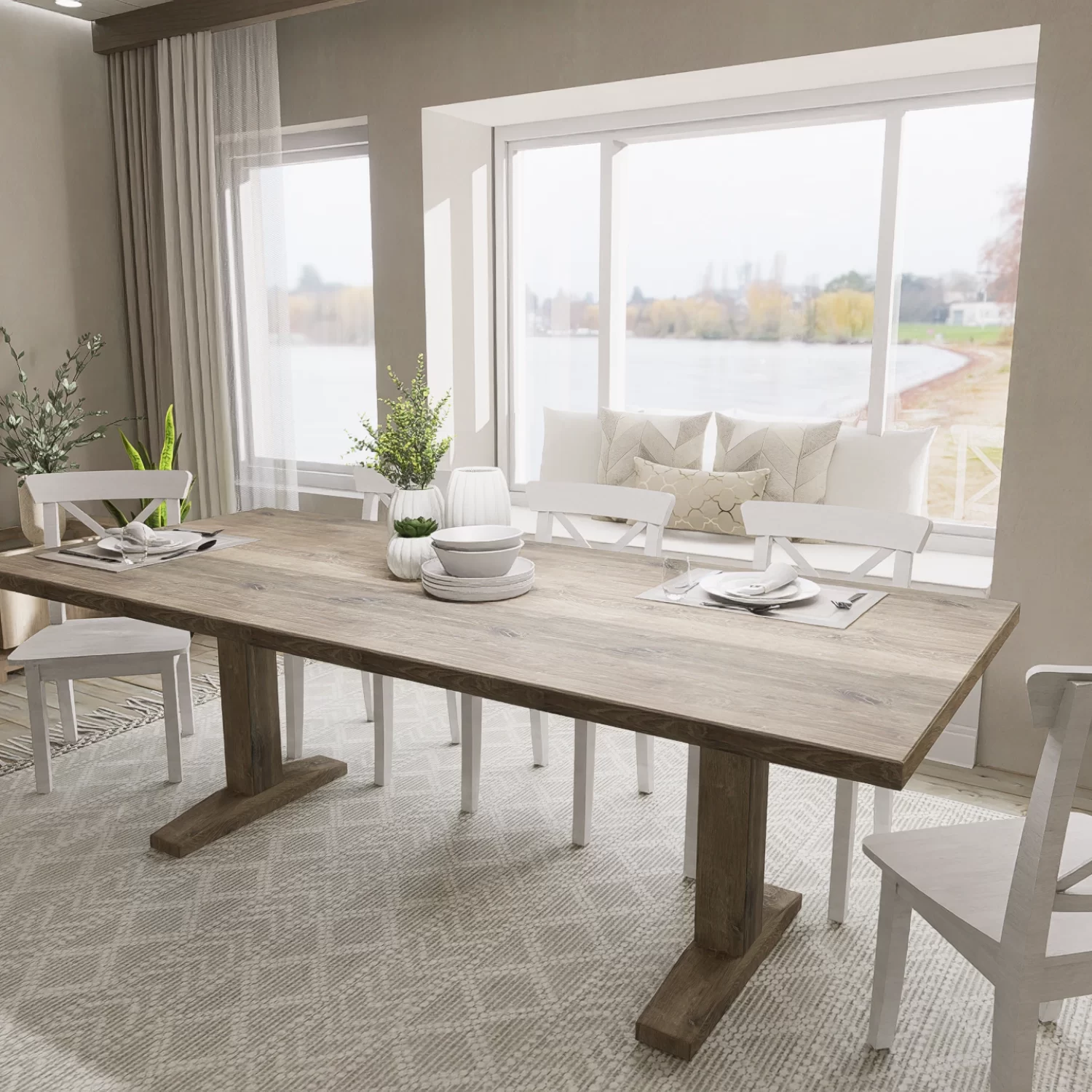
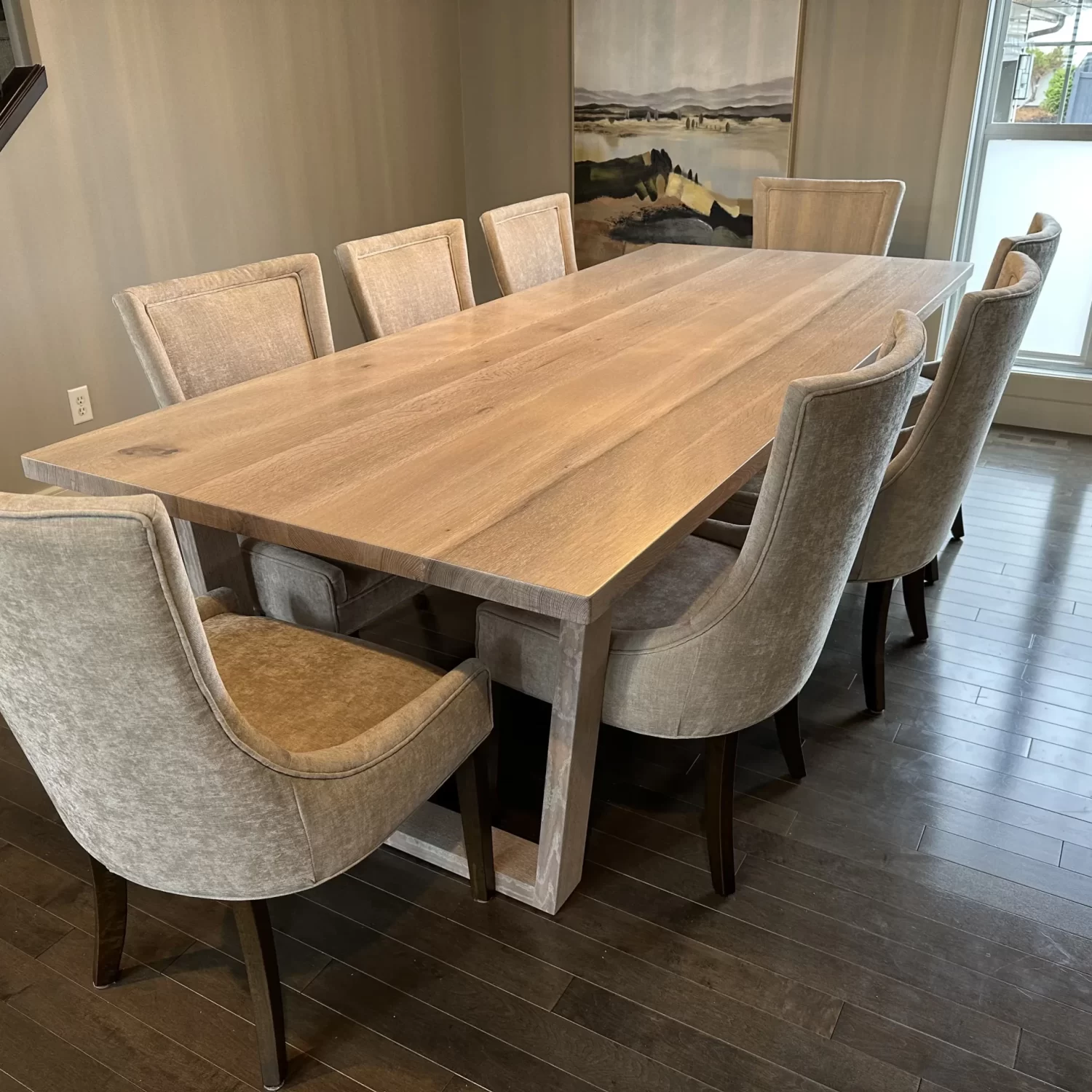
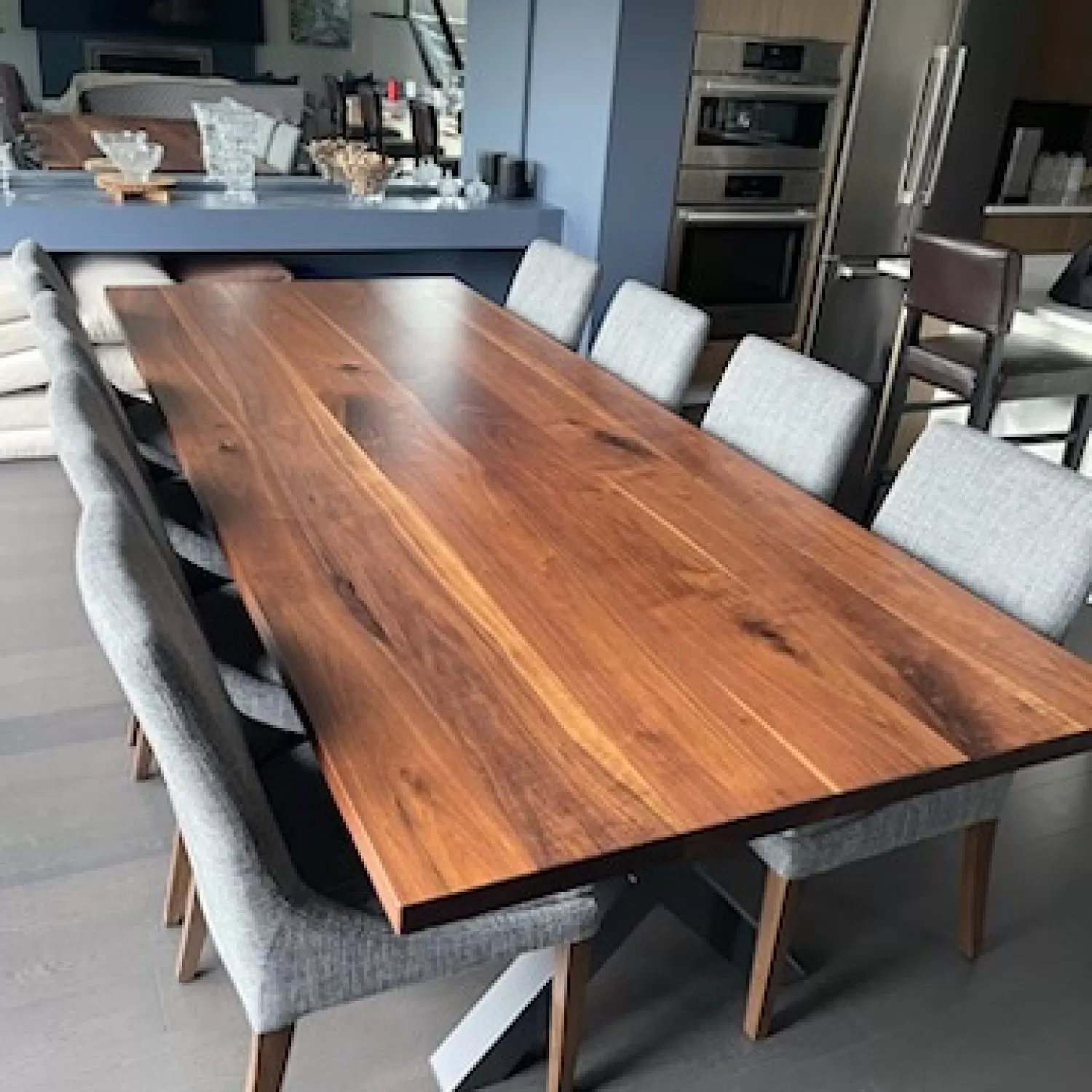
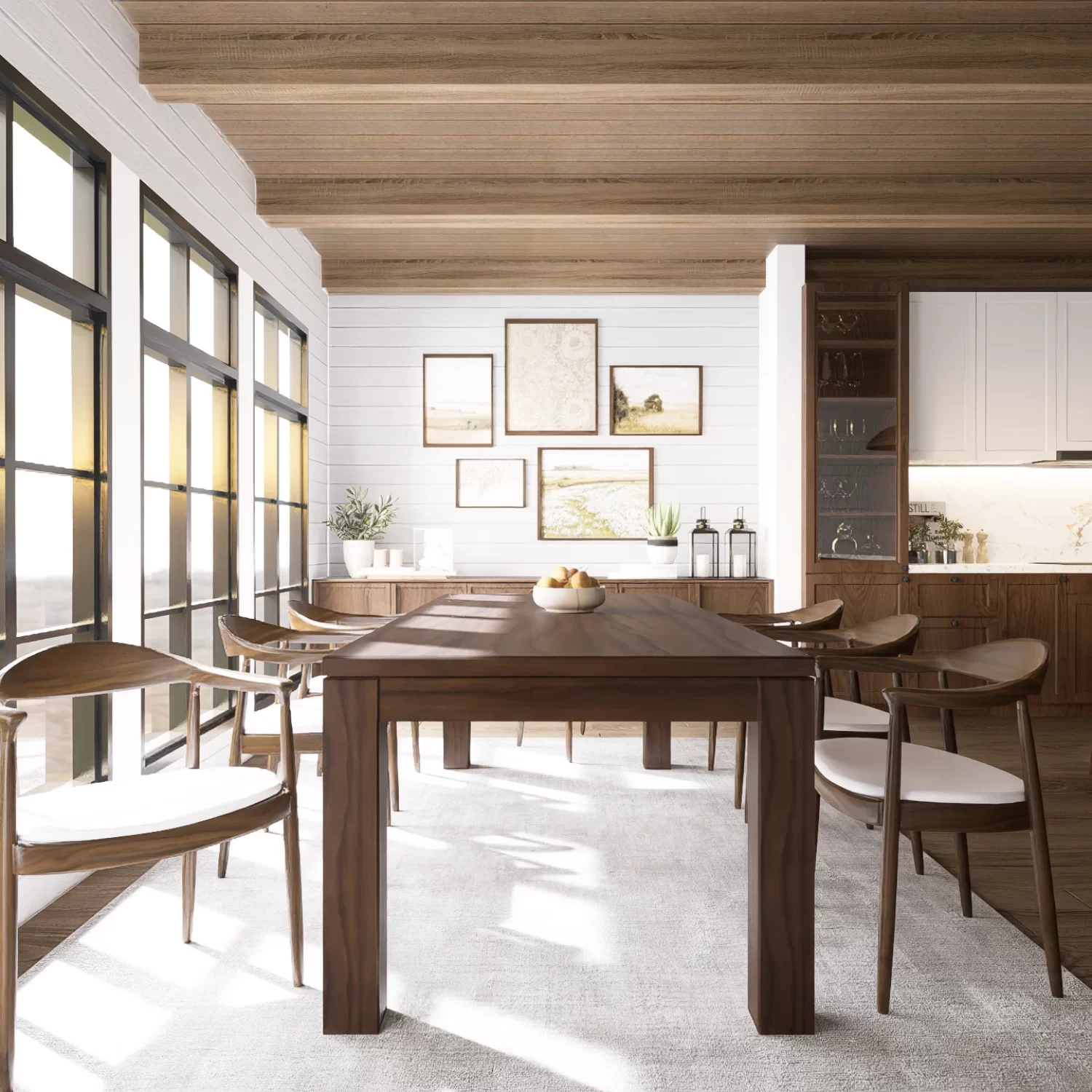
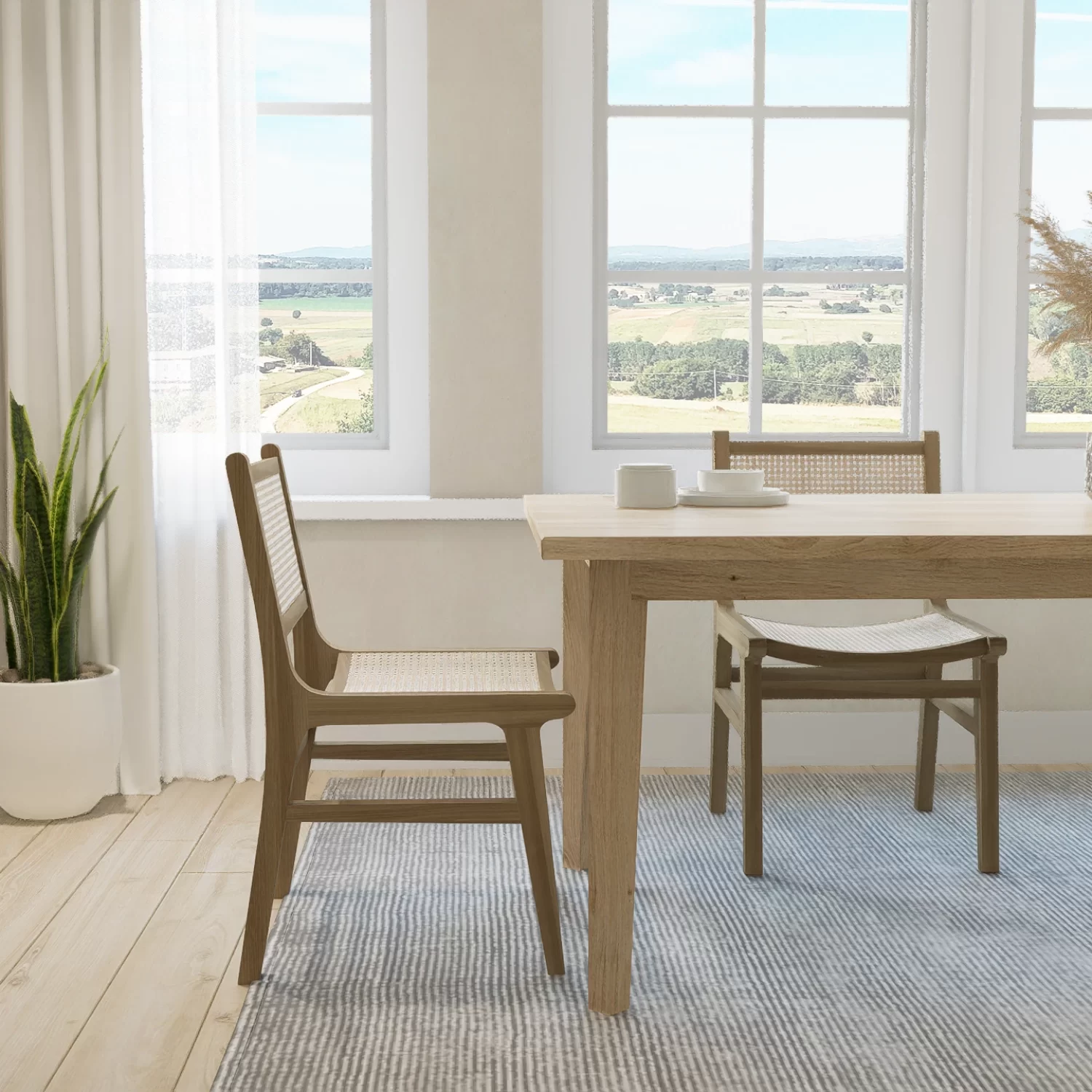
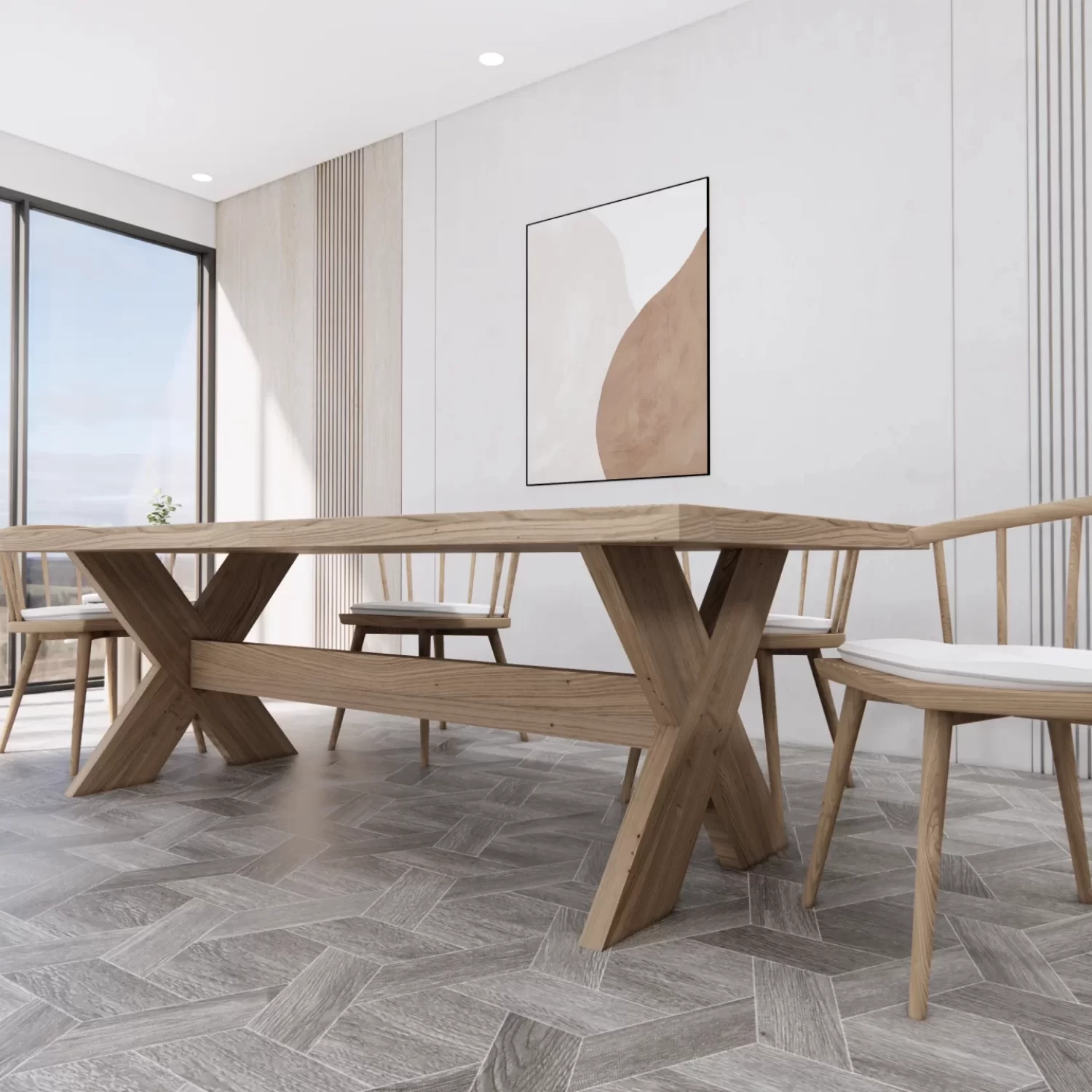

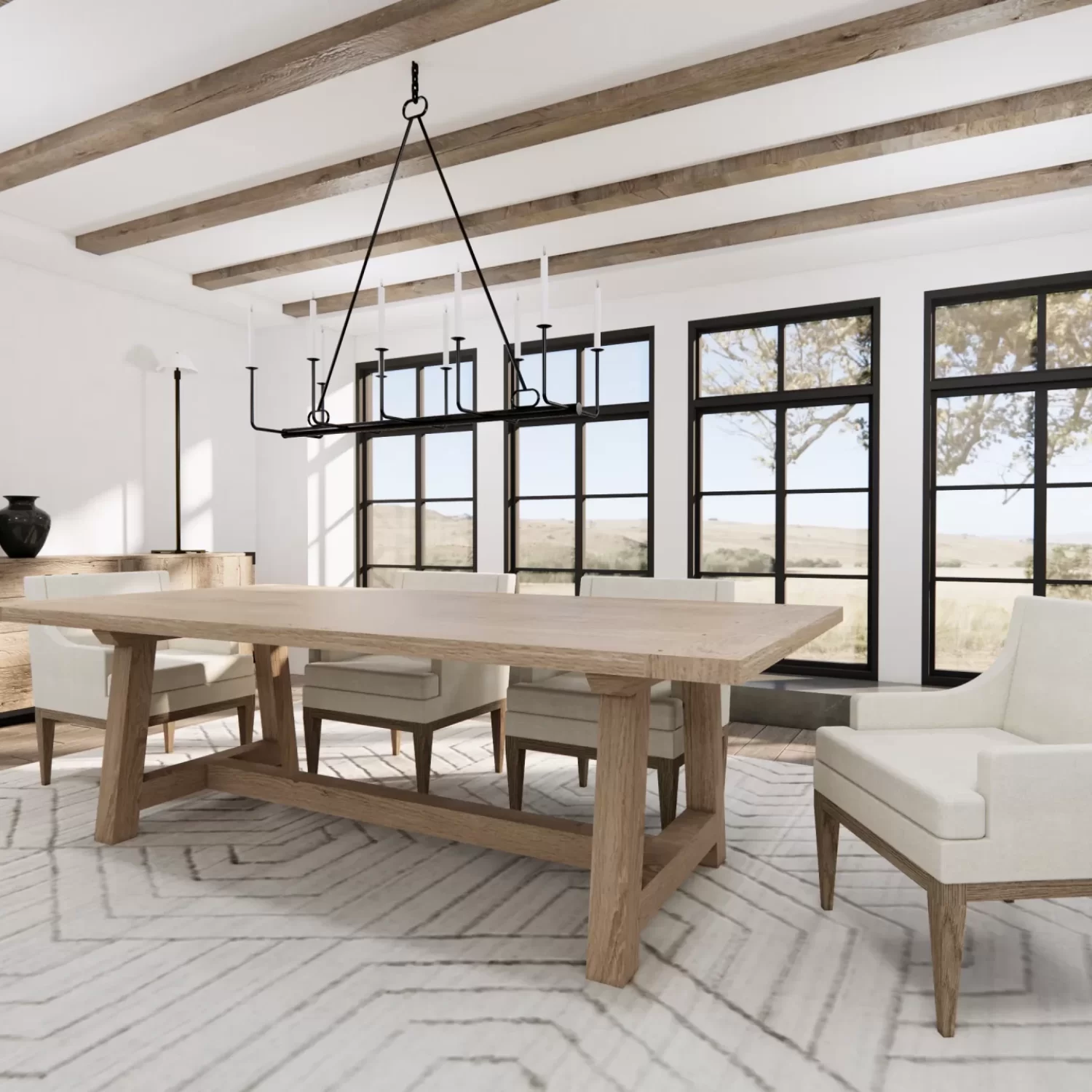
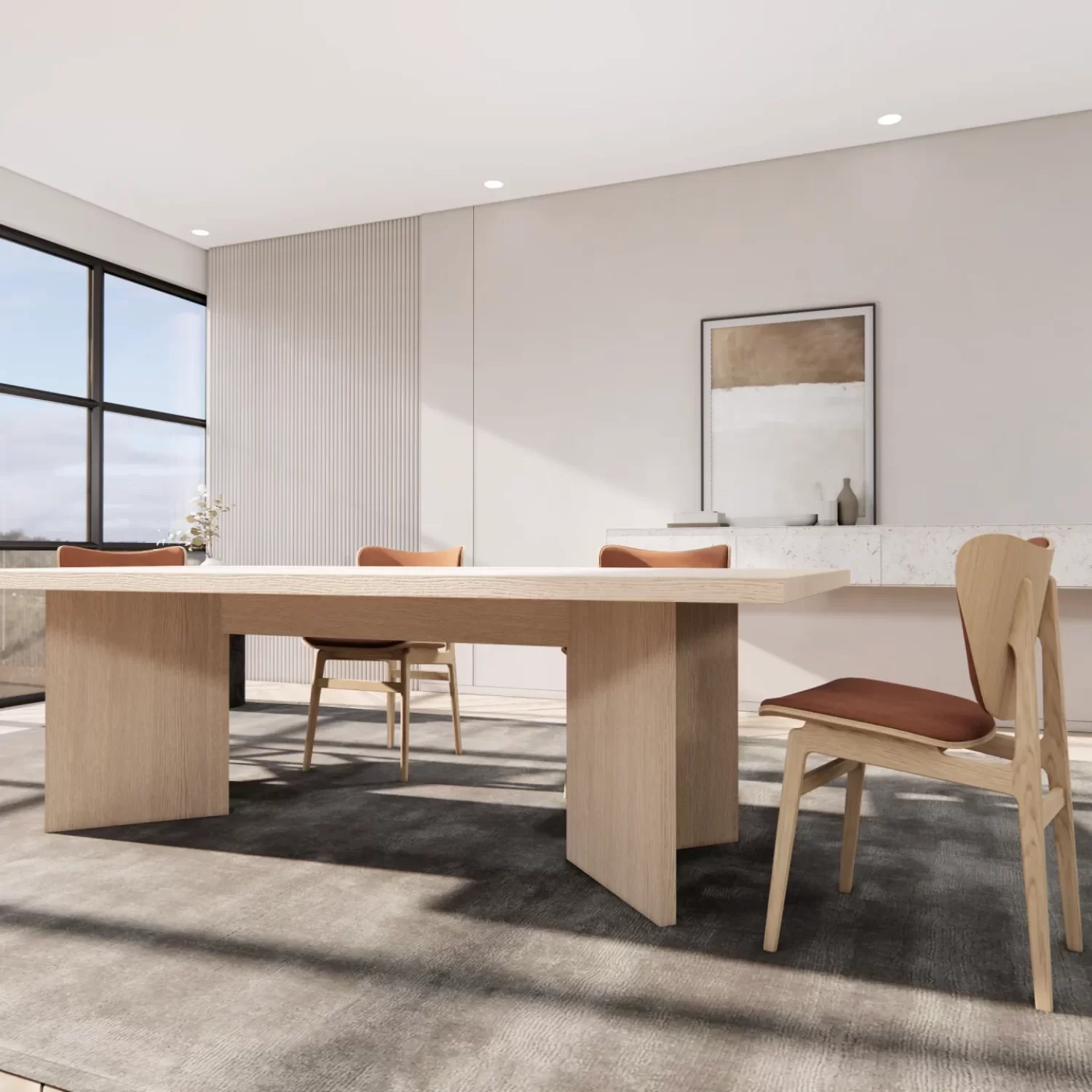
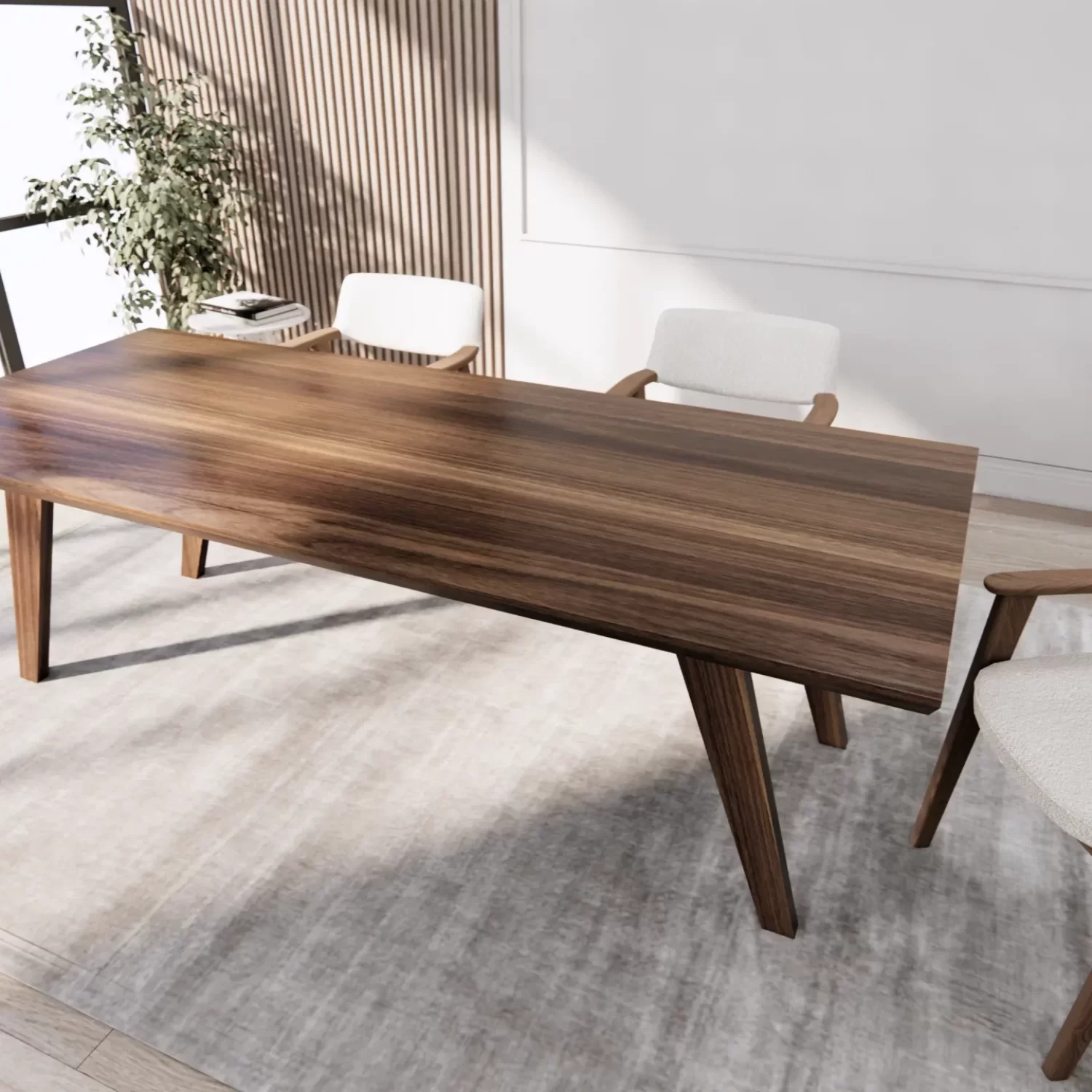
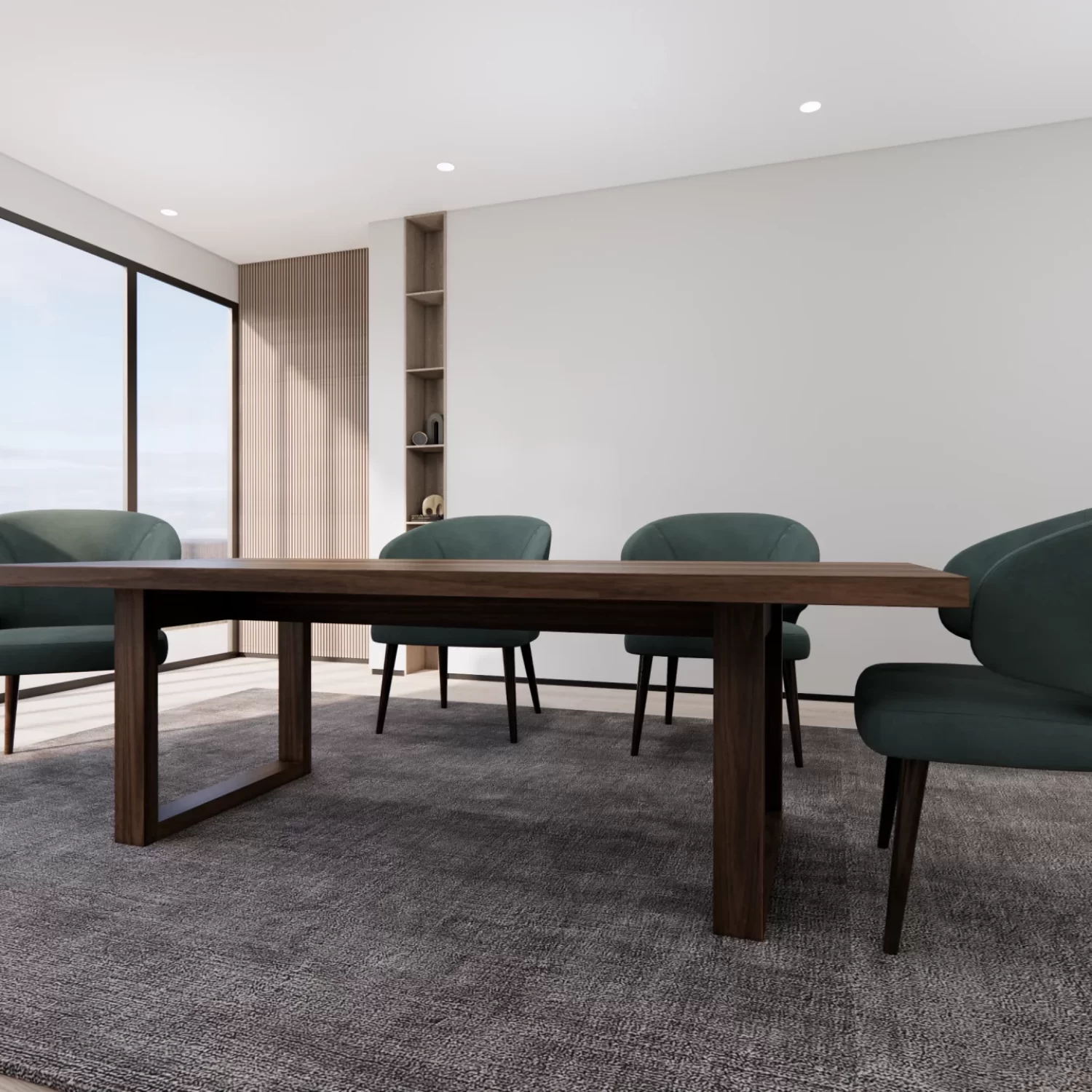

Dining Table Sizing Guidelines
Dining table sizing and style for your space doesn’t need to be a complicated task. You want a dining room table that fits your space , accommodates your guests, and matches your personal taste. But how do you know what size to choose? What factors should you consider? And where can you find a custom solid wood table that meets your needs?
In this guide, we will answer all these questions and more. We’ll walk you through the steps of selecting the perfect dining table size and style for your home, whether you’re looking for rustic, farmhouse, modern, mid-century modern, contemporary, live edge, or epoxy river tables. At Taitlin Studio, we have a wide range of options to suit your needs.
If you’re looking for a custom dining table in a specific location, we’ve got you covered:
Here are the key takeaways from this page:
| Factor | What to do |
|---|---|
| Shape | Choose a shape that suits your space and style. Rectangular tables are the most common and versatile, round tables are cozy and intimate, oval tables are elegant and spacious, and square tables are symmetrical and compact. |
| Dimensions | Measure your dining space and subtract 6 feet from both the length and width to get the maximum recommended size for your table. Adjust the dimensions according to your preferences and needs. |
| Seating capacity | Refer to the standard table dimensions and seating capacity chart below. Add or remove seats as needed. Consider using leaves or extensions, narrower or wider tables, or benches instead of chairs. |
| Clearance | Leave at least 36 inches of space between the table and the wall on all sides and at least 7 inches of space between the chair and the end of the table on each side of the chair. Factor in other furniture and features in your dining space. |
| Style | Choose a style that matches your personal taste and complements your existing decor. Browse Taitlin Studio’s website for inspiration and customization options. |
Dining Table Shapes and Their Advantages
The first factor to consider when choosing a dining table size is the shape of the table. The shape of the table can affect the space efficiency, aesthetics, and functionality of your dining room. Here are the pros and cons of each shape:
- Rectangular tables are the most common and versatile shape for dining tables. They can fit in most spaces and accommodate different numbers of people. They also offer a lot of flexibility in terms of style, as they can range from traditional to contemporary. However, rectangular tables can also make the dining room look narrow or crowded if they are too large or too long.
- Round tables are cozy and intimate shape for dining tables. They are ideal for small spaces and casual gatherings. They also create a sense of equality and harmony among the diners, as everyone can see and talk to each other. However, round tables can also limit the seating capacity and the tableware placement, as they have less surface area and edge space than rectangular tables.
- Oval tables are elegant and spacious shape for dining tables. They combine the benefits of both rectangular and round tables, as they have more surface area and edge space than round tables, but also have softer curves and smoother lines than rectangular tables. They are great for large spaces and formal occasions. However, oval tables can also be difficult to find and expensive to buy, as they are less common and more customized than other shapes.
- Square tables are symmetrical and compact shape for dining tables. They are perfect for small spaces and square rooms, as they create a balanced and proportional look. They are also easy to extend or combine with other tables, as they have equal sides and angles. However, square tables can also be uncomfortable and impractical for larger groups, as they have less legroom and require more space between them.
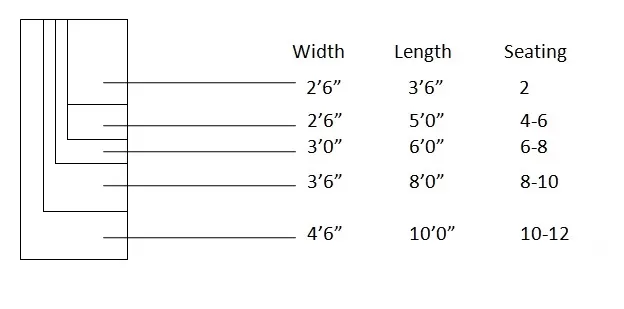
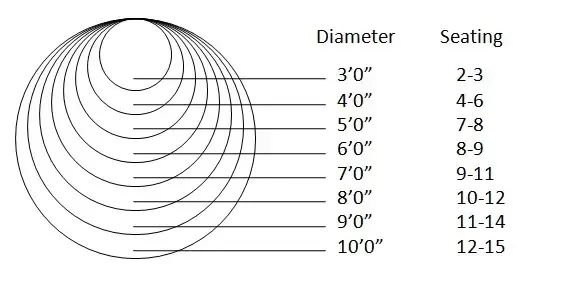
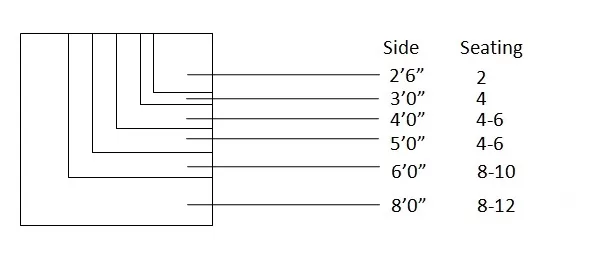
Dimensions and Seating Capacity
The second factor to consider when choosing a dining table size is the dimensions of the table. The dimensions of the table determine how many people can sit comfortably at the table and how much space the table occupies in your dining room. Here are some steps to follow to find the ideal dimensions for your table:
- Measure your dining space. Use a tape measure to measure the length and width of your dining room or area. Write down the measurements in feet or meters.
- Subtract 6 feet from both measurements. This will give you the maximum recommended size for your table. For example, if your dining space is 12 feet by 10 feet, then your maximum table size should be 6 feet by 4 feet. This will ensure that you have enough clearance around the table for walking and dining comfortably.
- Adjust the dimensions according to your preferences and needs. You can choose a smaller or larger table than the maximum size, depending on your space availability, seating capacity, and style preference. You can also use some tricks to customize your table dimensions, such as adding leaves or extensions, choosing narrower or wider tables, or opting for benches instead of chairs.
Here is a table that shows the standard dining table dimensions and seating capacity for different shapes and numbers of people:
| Shape | Number of people | Dimensions (in feet) | Dimensions (in meters) |
|---|---|---|---|
| Rectangular | 4 | 3 x 5 | 0.9 x 1.5 |
| Rectangular | 6 | 3 x 6 | 0.9 x 1.8 |
| Rectangular | 8 | 4 x 8 | 1.2 x 2.4 |
| Rectangular | 10 | 4 x 10 | 1.2 x 3 |
| Round | 4 | 4 (diameter) | 1.2 (diameter) |
| Round | 6 | 5 (diameter) | 1.5 (diameter) |
| Round | 8 | 6 (diameter) | 1.8 (diameter) |
| Oval | 6 | 3 x 6 | 0.9 x 1.8 |
| Oval | 8 | 4 x 8 | 1.2 x 2.4 |
| Oval | 10 | 4 x 10 | 1.2 x 3 |
| Square | 4 | 4 x 4 | 1.2 x 1.2 |
| Square | 6 | 5 x 5 | 1.5 x 1.5 |
| Square | 8 | 6 x 6 | 1.8 x 1.8 |
You can add or remove seats as needed, depending on the size of your chairs and the comfort level of your guests. For example, you can fit up to six people on a rectangular table that is normally for four people, if you use smaller chairs and place one person at each end of the table.

Dining Table Clearance and Comfort
The third factor to consider when choosing a dining table sizing is the clearance around the table. The clearance is the amount of space between the table and the wall or other furniture and features in your dining room. The clearance affects how comfortable and convenient it is to walk and dine around the table. Here are some tips to follow to ensure enough clearance for your table:
- Leave at least 36 inches of space between the table and the wall on all sides. This will allow you to move around the table easily and pull out the chairs without bumping into anything. If you have a smaller space, you can reduce the clearance to 30 inches, but not less than that.
- Leave at least 7 inches of space between the chair and the end of the table on each side of the chair. This will allow you to sit and stand up comfortably and have enough room for your legs and elbows. If you have a larger table, you can increase the space to 12 inches, but not more than that.
- Factor in other furniture and features in your dining space, such as sideboards, buffets, windows, doors, fireplaces, etc. Make sure that they do not interfere with the clearance or the functionality of the table. For example, if you have a sideboard or a buffet along one wall, you may need to leave more space between the table and that wall to access the storage or serve the food. If you have a window or a door behind one side of the table, you may need to leave more space between the table and that side to open or close them.
Common Dining Table Sizing Mistakes and How to Avoid Them
Selecting the right size for your dining table is crucial for creating a functional and inviting dining area. Here are some typical errors people make when choosing a dining table size and practical tips on how to avoid them:
Ignoring Room Dimensions
Mistake: Choosing a dining table size without considering the room dimensions can lead to overcrowding or underutilization of space. A dining table that’s too large can make the room feel cramped, while one that’s too small can seem lost in the space.
Solution: Measure your dining room carefully before shopping for a dining table. Allow for at least 36 inches of clearance around the table to ensure comfortable movement and seating. Use painter’s tape to outline the dining table’s dimensions on the floor to visualize how it will fit within your room.
Underestimating Seating Needs
Mistake: Selecting a dining table that doesn’t accommodate the number of people you typically entertain can result in cramped seating and awkward gatherings.
Solution: Determine the maximum number of guests you plan to host regularly. Choose a dining table size that provides ample seating for your needs. Refer to standard seating guidelines: for example, allow about 24 inches of table space per person. Consider dining tables with extensions if you frequently host larger groups.
Selecting the Wrong Table Shape
Mistake: Choosing a dining table shape that doesn’t suit the room’s layout can affect both the functionality and aesthetics of your space.
Solution: Match the dining table shape to the room’s layout and size. Rectangular dining tables are ideal for longer rooms, while round tables are better suited for smaller spaces. Square tables can work well in square rooms or for intimate dining areas.
Neglecting Functionality
Mistake: Focusing solely on the dining table’s appearance without considering its functionality can lead to a table that doesn’t meet your practical needs.
Solution: Balance design with practicality. Ensure the dining table size and height are appropriate for your needs and that it’s made from durable materials that can withstand daily use. Think about how the dining table will fit with your chairs and the overall flow of the room.
Forgetting About Future Needs
Mistake: Choosing a dining table based only on current needs without thinking about future changes, such as a growing family or frequent gatherings, can lead to dissatisfaction.
Solution: Anticipate how your dining needs might evolve. Opt for dining tables that can adapt to future requirements, such as extendable or expandable options. This flexibility will ensure your dining table remains suitable as your needs change.
Overlooking Clearance Space
Mistake: Not leaving enough space around the dining table can make dining uncomfortable and restrict movement.
Solution: Ensure there’s sufficient clearance around the dining table. Aim for at least 36 inches between the table edge and the walls or other furniture. This space allows for easy movement and comfort while seated.
By paying attention to these common mistakes and following these tips, you can select a dining table size that enhances both the functionality and aesthetic of your dining area, creating a space that is both practical and inviting.
Ready to create your custom dining table? We proudly offer delivery across Edmonton, Sherwood Park, St. Albert, Red Deer, and Calgary.
Need Help?
FAQs on Dining Table Sizing
F.A.Q.
Choosing the right dining table size is key to enhancing your dining area’s functionality and style. Here, we answer common questions about dining table sizing to help you find the perfect fit for your space and needs.
In small spaces, it’s important to select a dining table that maximizes functionality without overwhelming the room. A round dining table, typically 36 to 42 inches in diameter, is ideal for smaller areas as it provides ample seating while allowing for easier movement around the table. If you’re tight on space, consider a wall-mounted or drop-leaf table that can be folded away when not in use. These options help you maintain an open and flexible living area.
Dining tables come in various sizes to accommodate different numbers of guests. A standard dining table size typically seats 4 to 6 people comfortably. If you often entertain larger groups, consider a table that can seat 6 to 8 people. Tables with extension leaves or expandable designs offer flexibility, allowing you to adjust the size based on the number of guests. For optimal comfort, allow about 24 inches of table space per person.
o handle unexpected guests, opt for a dining table with extension leaves or an expandable design. These tables can be adjusted to provide extra seating when needed. Another practical solution is to keep a couple of foldable chairs in storage, which can be brought out to accommodate additional guests without cluttering the dining area.
For a multi-purpose room, such as one that serves as both a dining area and a home office, select a dining table that fits well with the room’s overall functionality. A smaller, versatile dining table that can double as a workspace might be ideal. Alternatively, a drop-leaf or extendable table allows you to adjust the size based on the room’s current use, ensuring flexibility and efficiency.
To determine the best dining table size for your room, first measure the dimensions of the space. Ensure there is at least 36 inches of clearance around the dining table to facilitate comfortable movement and seating. For a well-proportioned setup, the table should be roughly two-thirds the length of the room. Use painter’s tape to outline the table’s footprint on the floor, allowing you to visualize how the table will fit and whether it complements the room’s layout.
The standard height for a dining table ranges from 28 to 30 inches from the floor to the tabletop. This height ensures that diners have enough legroom while seated. For comfortable dining, there should be about 12 inches of clearance between the seat of the dining chair and the underside of the table. This allows for an enjoyable dining experience without feeling cramped.
Absolutely. The shape of your dining table should complement the shape and size of your room. Round dining tables are great for smaller spaces and create a cozy, intimate atmosphere. Rectangular dining tables are suitable for longer rooms and can accommodate more people. Square tables work well in square rooms or for intimate dining setups. Choosing the right shape helps optimize space and enhances the overall look of your dining area.
To ensure your dining table size complements your existing furniture, consider the overall layout of your dining area. Measure the space between the table and other pieces of furniture, such as sideboards or cabinets, to maintain a balanced and accessible arrangement. Choose a table size that aligns with the scale of your room and doesn’t crowd other elements. Using painter’s tape to outline the table’s dimensions on the floor can help you visualize how it fits with the rest of your furnishings.
